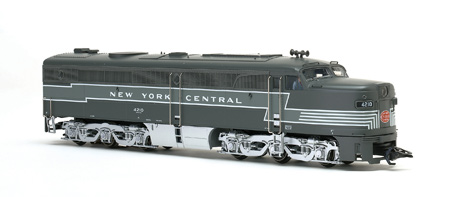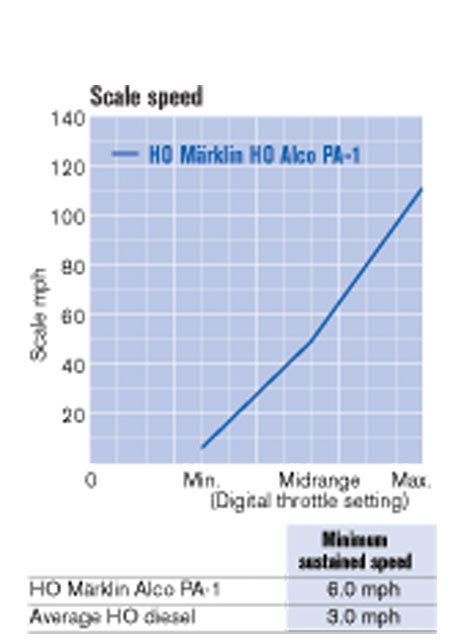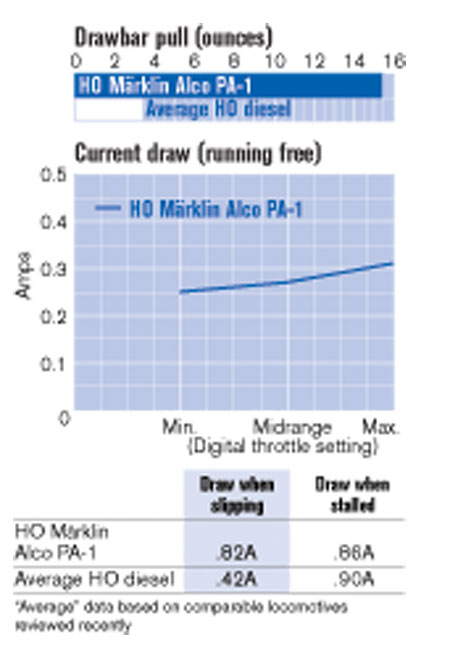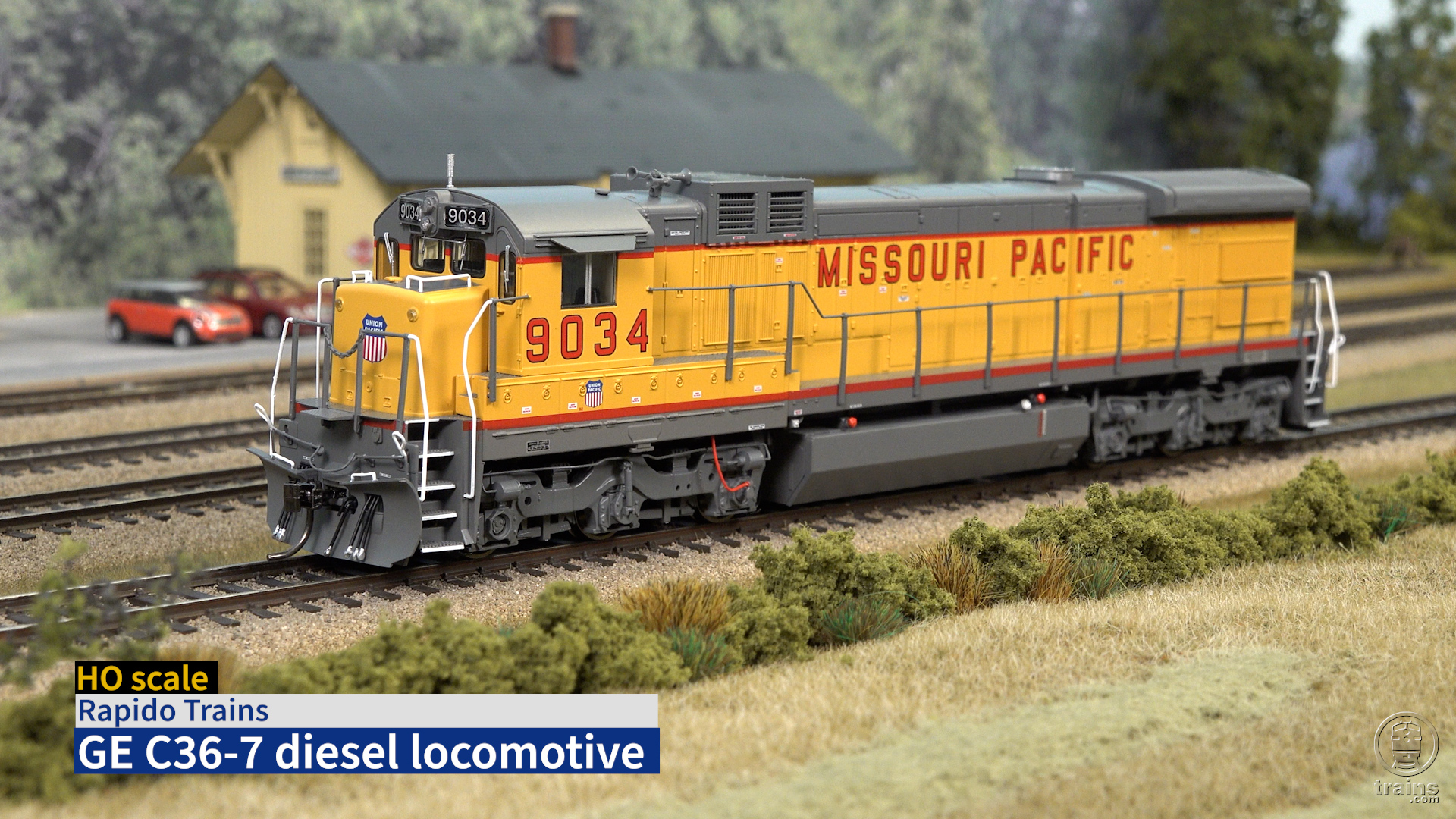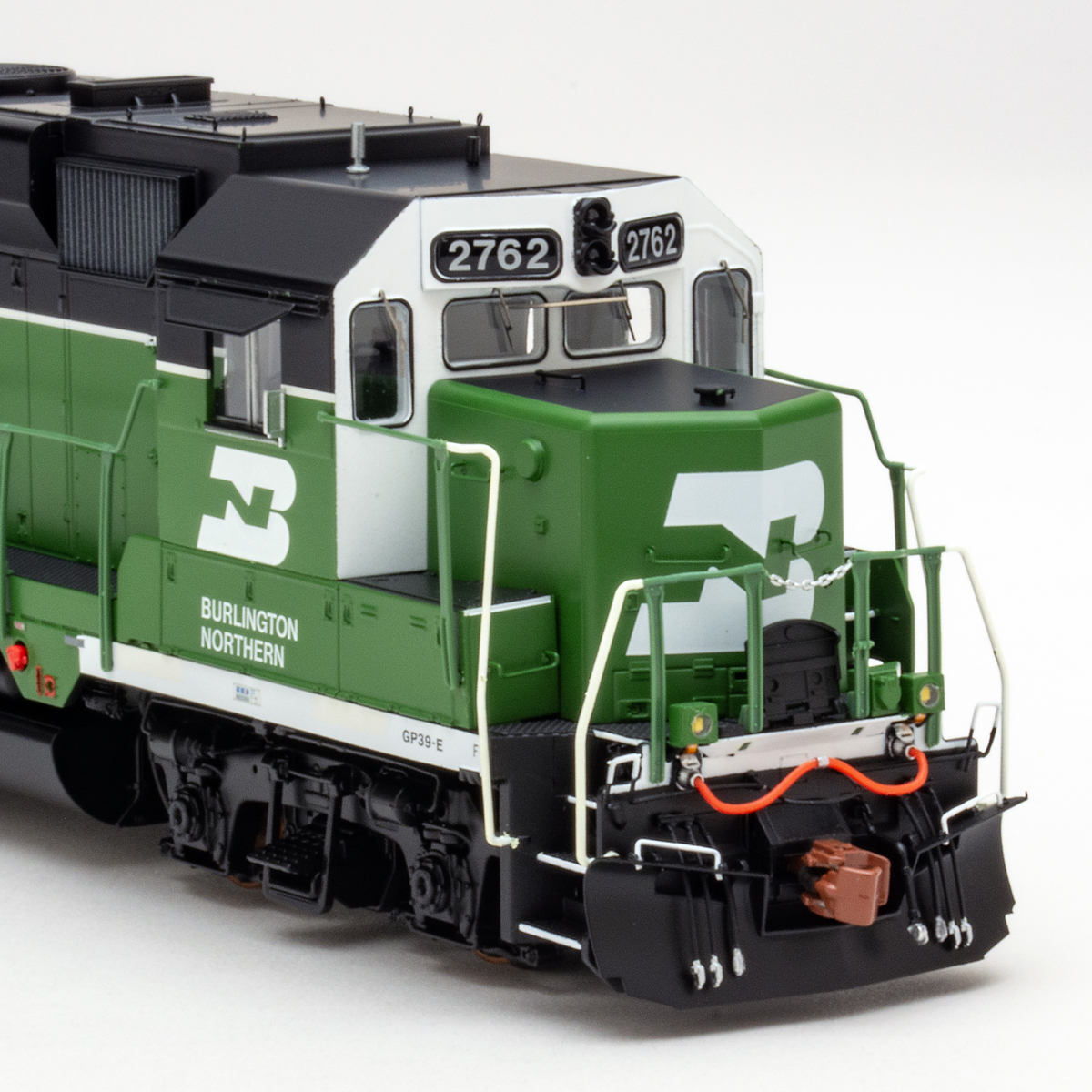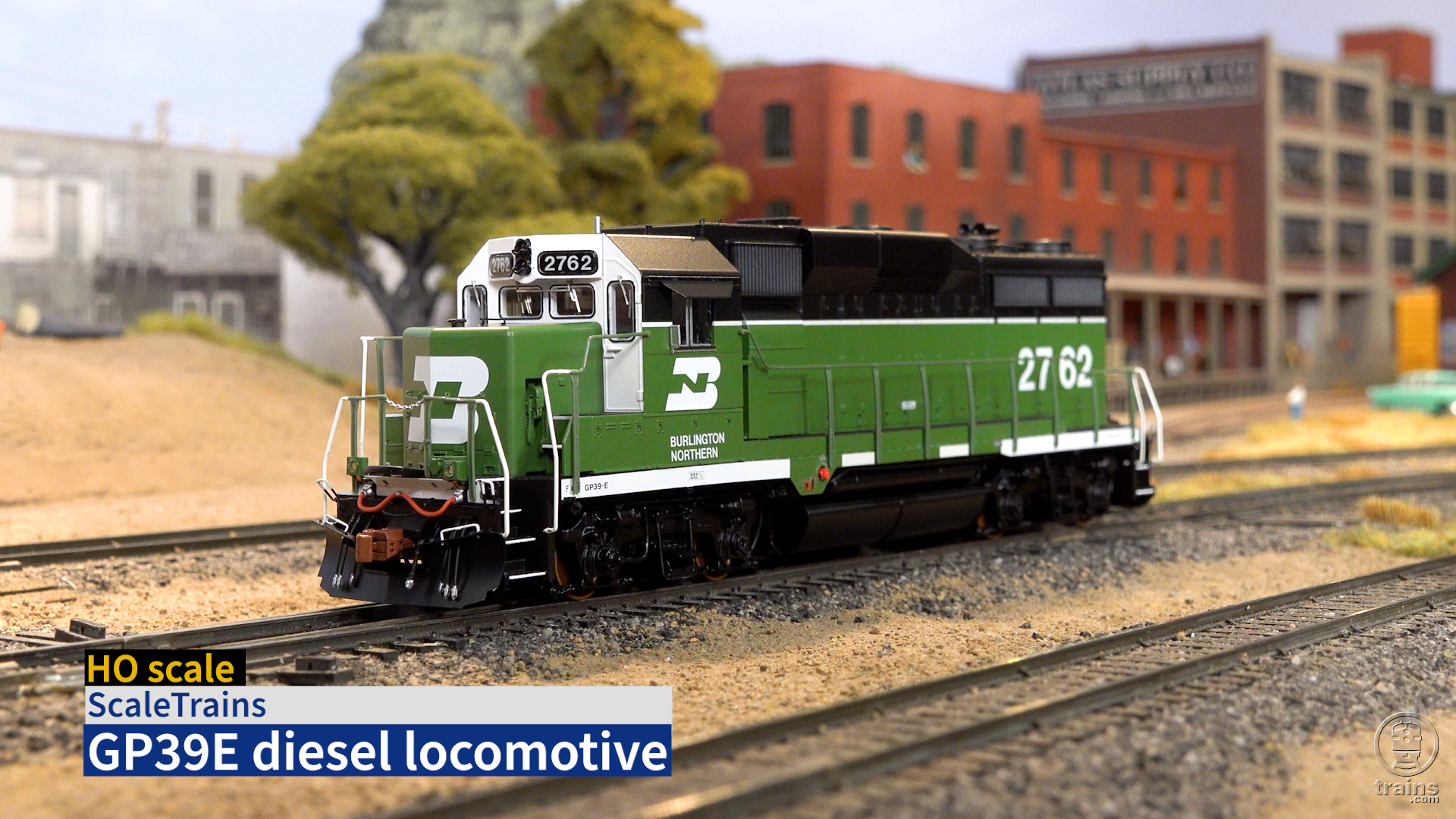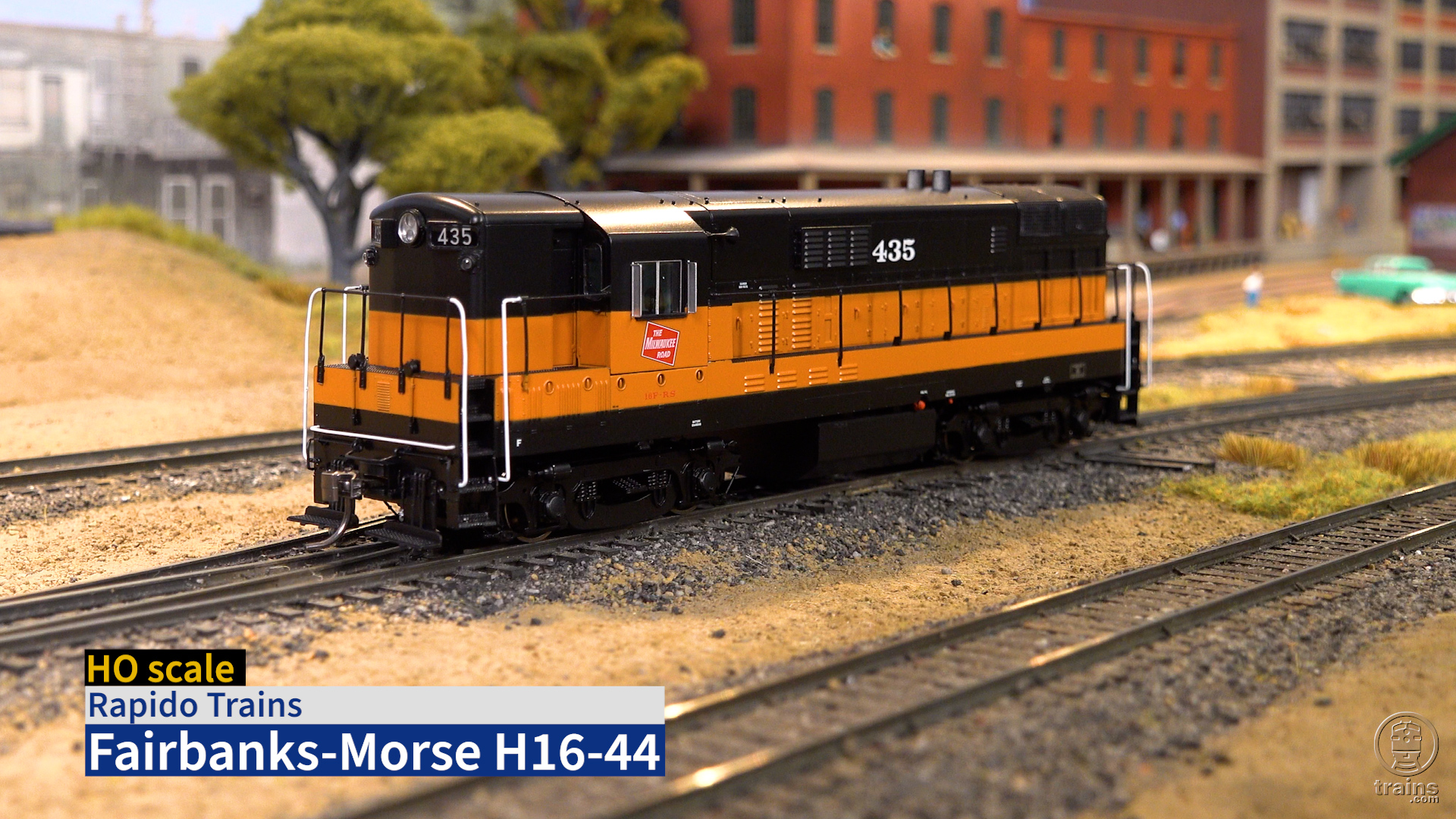For a closer look at this part of the set, I’ve asked Rutger Friberg, an international DCC expert and author of the book, Digital Command Control – the Comprehensive Guide to DCC, for his comments.
Märklin System revealed. This new digital control system, dubbed “Märklin Systems,” was developed on a generic platform intended to host various digital protocols. Additionally, the system is Ethernet LAN (Local Area Network) based for easy connection to a personal computer.
As it was first unveiled at the 2004 International Toy Fair in Nuremburg, Germany, the entire system consists of several modules. One command station with smaller power output capacity will be included in HO train sets, and another with greater output will come in large scale sets.
Two other components, a booster and a larger command station, are planned for development.
PC game control with brains. A no. 60652 Mobile Station is included in the digital starter set. It functions both as a cab and a command station. Its compact, handheld form resembles popular PC-game controllers. The unit fits ergonomically into your palms, making it easy to view the graphic display and operate the controls.
Using the TFT (Thin Film Transistor) graphic display at the center of the Mobile Station, you can view a library containing all of the existing Märklin Digital engines. When you select a locomotive to run, all relevant functions, such as horn, bell, and headlight operations, appear on the display adjacent to the nine function keys. Another option is to key in an engine of your own choice. The identity may be digits, but there’s also provision for alphabetical names like Alco, Big Boy, Mikado, and so on.
When used with Märklin’s forthcoming MFX decoder, this system will be able to host 16,384 decoder addresses and a large number of digital accessories. But for now, the scope is limited to the 80 decoder addresses found in the present Märklin Digital control system. [The MFX decoder will feature two-way communication with the system, including automatic display of the locomotive’s type. – Ed.]
Power connections. Along with a new control system comes a new power transformer equipped with a secondary low-voltage cable and special connector that plugs into a plastic box permanently mounted on the feeder track. This rather bulky, black plastic connector box is the only part of the system that isn’t designed to the high standard of the other components. This connector box also contains a 10-pin receptacle for the Mobile Station and a 7-pin receptacle for the Command Station that’s yet to be released.
The track adapter contains only a three-amp rectifier and an electrolytic capacitor of 2200 µF/25V. This means that the full track power is distributed five feet up to the Mobile Station. There it’s mixed with digital command signals, routed back through the cable to the adapter, and finally out to the track. It’s certainly an unusual method, but the rationale for this approach may become clearer as new components are developed for the system.
System summary. The Märklin System is an elegant digital control system with great potential.
With software that can be updated from the Internet and connectivity via Ethernet LAN network, it’s also a versatile system. I can imagine that wireless operation through WLAN might be another possible feature. Also, more functions will be available through the new MFX decoder.
I’m feeling a growing enthusiasm as I anticipate how this new system’s generic platform might work in support of Digital Command Control (DCC) – a remarkable potential option that would pair the most popular digital protocol with the proven quality of Märklins digital systems. – Rutger Friberg
Train components. In addition to the Mobile Station and 110V transformer, Märklin’s American starter set includes a New York Central (NYC) Alco PA-1 diesel locomotive with four freight cars, including a Boston & Albany open hopper with coal load insert, an NYC Pacemaker service 40-foot boxcar, a Merchants Despatch Transportation (NYC) 40-foot refrigerator car, and a Union Pacific-style caboose painted in Pittsburgh & Lake Erie colors. [This NYC subsidiary did acquire a couple of third-hand UP cabooses in 1983. – Ed.]
All of the equipment comes with Märklin couplers, but the NEM 362-style boxes will accommodate replacement Kadee nos. 17 or 18 magnetic knuckle couplers which have the appropriate swallow-tail shanks to plug right in.
Sufficient Märklin stud-contact “C” Track (with plastic roadbed) is included with the set to make an oval with a passing siding. Easy-to follow, multilingual instructions make it possible to get trains running within minutes.
The overall quality of the ready-to-run cars is high. Except for the couplers, European wheelsets (not insulated for two rail), and paint, these cars are identical to Märklin’s Trix cars reviewed in the December 2003 Model Railroader.
We used an RRampMeter from Tony’s Train Exchange (reviewed in the February 2003 Model Railroader), to obtain the test readings for current drawn. On Märklin’s command control, the PA-1 starts at a low throttle setting and slowly gains speed. Only two axles are powered, yet this model produces an amazing amount of pulling power thanks to its traction tires.
At moderate to high speeds, the whine from its transversely mounted, open-frame motor and growl from the spur-geared mechanism become apparent, yet tolerable. However, when combined with the friction of a sliding center-rail pickup shoe, these normal operating noises began to detract from the hearty on-board sound effects.
The locomotive’s sounds include a horn, bell, and diesel exhaust. The exhaust and bell sounds reproduce with depth through a single speaker at the center of the unit, but the two-chime horn (long-long-short-short) is a bit too reminiscent of an automobile. Out of the box, the sounds are set to a moderate volume, but this and other functions can be adjusted using the menu-driven Mobile Station.
The directional headlight glows in a yellow hue from a single light-emitting diode (LED). Pairs of smaller LEDs illuminate the classification lights and number boards in the same yellow hue, independent from the headlight control.
Although the locomotive is a significant element of this set, it’s the Märklin Systems technology, as controlled by the Mobile Station, that’s bound to draw just as much attention and praise – especially considering the exciting features it now controls and the future potential that it offers.
Price: $645.00 each
Manufacturer:
Märklin, Inc.
P.O. Box 510559
New Berlin, WI 53151-0559
www.marklin.com
Description:
Ready-to-run die-cast Alco PA-1 diesel locomotive, 4 freight cars, 110V AC transformer, mobile digital hand control, and loop of track
Features:
Built-in sounds system
Constant, directional headlights
Die-cast metal shell
Drawbar pull: 15.52 ounces
(with traction tires), equivalent
to 217 free-rolling freight cars
on straight and level track
Engine weight: 28 ounces
Minimum radius: 14 3/16″
Spring-loaded diaphragms
Three-rail electrical pick up
Truck-mounted Märklin
European couplers in boxes
that accept Kadee no. 17 or
18 magnetic knuckle couplers
Wire grab irons





